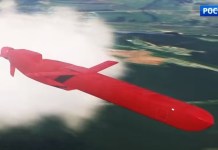OPED By Lt Gen Abhay Krishna (R)
The Rakhine Corridor is fast becoming one of South Asia’s most consequential geopolitical flashpoints. Ostensibly framed as a humanitarian lifeline delivering relief to northern Rakhine, the gateway has been cloaked in an aura of altruism. Yet beneath this veneer lies a far more significant strategic gambit.
As control of Rakhine State increasingly rests with the Arakan Army (AA), now firmly in command of most of the territory, the corridor is poised to become a theater for deepening great power rivalry among the United States, China, and regional actors.
Bangladesh, thus, finds itself trapped in the crosshairs of these high-stakes contests.
Strategic Intent Behind Humanitarian Cover
Publicly, the corridor is pitched as a humanitarian aid route for northern Rakhine, where nearly two million people are facing famine, conflict, and displacement.
UN Secretary General António Guterres had even referred to aid cuts amidst a humanitarian crisis as “a crime” during a visit to Cox’s Bazar. But this humanitarian narrative masks a broader strategic calculus orchestrated by the United States, as many believe.
The corridor would not only facilitate aid but also solidify Western influence at a critical maritime junction, namely the Bay of Bengal.
A UN–US–Bangladesh proposal to open the route has stirred alarm in Dhaka’s Praetorian Guard—the Bangladesh Army.
General Waqar-uz-Zaman, the Army chief, lambasted the plan as a “bloody corridor” that risked compromising sovereign control. The corridor is a potential beachhead, literally and figuratively, for Western intelligence agencies to project soft or semi-hard power into Myanmar, right on China’s periphery.
Bangladesh’s Dilemma
The civilian interim government, led by Nobel laureate Muhammad Yunus, has signaled interest in the corridor under pressure from the US and its allies.
At the same time, Yunus is also under growing strain from the military, which views the corridor as a trap. Waqar’s insistence on holding elections by December 2025 further undermines Yunus, who seeks legitimacy through a delay in the reform process.
This clash between General Waqar and Chief Adviser Yunus is no coincidence. General Waqar draws a pointed parallel to 1980s Pakistan, when US support for the anti-Soviet mujahideen came at a steep long-term cost for Pakistan, including the Islamic radicalization of politics, the permanent entrenchment of foreign intelligence networks within the country, and a legacy of instability that has endured for over four decades under Zia ul-Haq, Musharraf, and the governments that followed.
The Bangladesh Army, therefore, views the proposed Rakhine Corridor as a dangerous revival of the US Afghan playbook, but this time in Myanmar.
It fears being drawn into a proxy war in Myanmar and getting dragged deeper into the US sphere of influence, ceding strategic ground to outside powers operating under the banner of so-called “partnership “and ultimately risking provocation of China.

China’s Calculus
From Beijing’s perspective, the Rakhine Corridor is a strategic irritant along China’s major artery, that is, the China–Myanmar Economic Corridor (CMEC).
The Kyaukphyu port, now likely slated to open in late 2025, is located in southern Rakhine and is central to Beijing’s land-sea route that bypasses the Strait of Malacca. A US–UN corridor injecting Western influence into Rakhine would, thus, blunt that strategic depth.
Beijing also retains strong ties with Myanmar’s junta and invests heavily in security cooperation across ethnic groups, including tacit support to the AA. Thus, any corridor seen as empowering the AA or even merely exposing Chinese assets would be perceived as a direct strategic affront.
India’s Quiet Alignment
India’s stance introduces complexity. While New Delhi should synchronize with Washington on paper, however, in practice, Delhi’s interests in Rakhine closely mirror Beijing’s apprehensions.
India has made substantial investments in the Kaladan project; therefore, it needs stability in northern Rakhine to improve trade and connectivity in its northeastern region. More critically, India cannot afford Western intelligence agencies encroaching on its vulnerable northeast.
Hence, India must quietly lean into General Waqar’s position. By doing so, it will limit Bangladesh’s strategic autonomy, block US encirclement, and prime India for deeper engagement with anti-junta entities like the AA or Chin State rebels.
Evidence of informal contacts has started to emerge as Indian security officials have reportedly met with AA representatives, most notably in Mizoram, where India has provided non-lethal support and diplomatic channels without overtly aligning with any single entity involved in the Myanmar Civil War.

The Arakan Army’s Leverage & Risks
The AA now controls around 90% of Rakhine State, including key border townships, and governs daily life through its administrative system.
But this dominance comes with risks. A corridor that delivers aid through AA-controlled territory could legitimize a rebel authority, undermining Myanmar’s territorial integrity and turning the region into a flashpoint for proxy competition.
For Bangladesh, it will mean getting pulled into a conflict zone and facing strong reactions from both Myanmar’s government and China.
The Broader Strategic Play
What makes the corridor issue so pivotal is its role as a test case for future proxy conflicts. Humanitarian aid becomes the fig leaf under which geopolitical encirclement unfolds.
Bangladesh’s army, therefore, smells the trap, and China detects interference. However, India sees an opportunity to assert itself on its own terms, and AA views it as a chance to leap beyond the mere status of being a non-state combatant and into mainstream geopolitics.
While behind closed doors, the US has been slow walking its offer to prevent overt backlash, but the Burma Act of 2022 and the escalating advocacy in Washington reveal the strategic design.
What unfolds in the next few months will define the Bay of Bengal’s contours for years. If Bangladesh opts for the corridor, it risks military pushback or worse, a splintered governance and external meddling.
If the army insists on holding elections and rejects the corridor, then we may see a tacit alignment with India and China, potentially leading to a more active Indian role in securing northern Rakhine or reinforcing the closure of the corridor.
For Delhi, backing General Waqar is pragmatic as it insulates its northeast, keeps Bangladesh in check, and positions India as the linchpin in any future negotiations with Myanmar’s ethnic forces. For Beijing, the corridor’s failure would preserve its SE Asian sphere of influence, protect Kyaukphyu, and forestall American penetration into the region.
Conclusion
The Rakhine Corridor is more than a passage for aid. It has become a prism through which to view emergent great power competition in South & Southeast Asia, a competition fought not with battleships but with logistics, influence, and infrastructure.
Bangladesh sits at the fulcrum as a fragile pivot in the great game. Its policy choice will define whether it remains a sovereign buffer or becomes a staging ground for external ambitions.
At stake is far more than humanitarian virtue. It is the future of regional order as to who controls access to the Indian Ocean, whose flags fly near Rakhine’s ports, and whose orders reach across another corridor someday.
In the decades to come, historians may look back and regard the Rakhine Corridor as either a bold bridge of relief or an open door for strategic encirclement. From Dhaka to Delhi, Beijing to Washington, the stakes have never been higher and the contest has only just begun.
- Lt Gen Abhay Krishna (retd), PVSM, UYSM, AVSM, SM (G), VSM – is a former Indian Army Commander of South Western, Eastern, and Central Commands.
- Views expressed are the author’s personal




